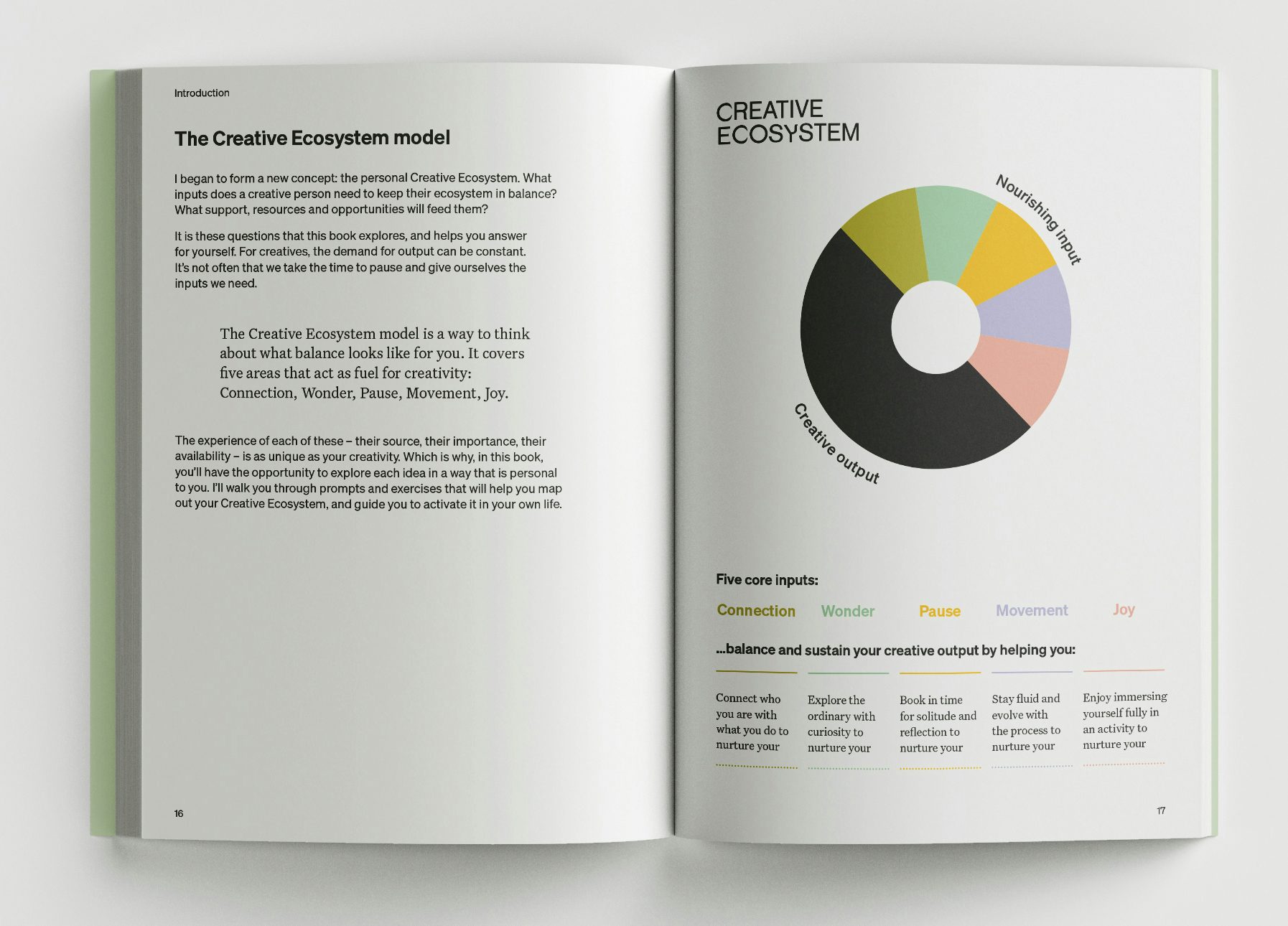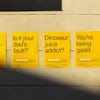How to fuel creativity, find balance and stay inspired
In this extract from Emmi Salonen’s new book, The Creative Wellbeing Handbook, she explores how creative thinkers can reduce stress and avoid burnout
There was a point in my life when I lost touch with a lot of who I was, and what brought me joy. I was burned out.
Since starting university, I hadn’t stopped. I graduated with my Graphic Design BA from University of Brighton in the UK, then moved to Italy to work at Benetton’s communication research centre, Fabrica. From there, I moved to London, then New York, to work at design studios with some of the world’s biggest brands as their clients. Before long, I set up my own design practice, Studio Emmi.
From the outside, my career had all the hallmarks of success. I was channelling my creativity into work that mattered and getting the opportunity to work on a constant stream of varied, intellectually stimulating projects.
But I started noticing a new level of exhaustion after work each day. I stopped seeing my friends and started neglecting exercise. Over weeks that became months, I realised I felt increasingly unwell. More worryingly to me, I realised that I no longer wanted to create. The spark was gone – the thrill of new ideas felt like a distant memory.
Frightened, I thought: If I’m no longer a creative, who am I? How did my light get so low? Why do others – a worrying 70% of creatives – suffer the same dimming of their spark? These questions took me all over the world – and, eventually, right back to my design studio. Happily, creativity is a flame that can be diminished but not extinguished.

The answers began revealing themselves to me on a long solo trip to connect with and learn from creative people in different places, from different cultures. My journey across continents took me to unfamiliar landscapes – to the volcanic Marquesas Islands in French Polynesia, where it takes only a small leap of imagination to see dinosaurs roaming; on a pilgrimage to Shashamane in Ethiopia; to the striking Pink Sea of Colombia; and to Norway’s turquoise Arctic waters.
It led me to my childhood Finnish archipelago forests, where I spent weeks at a time exploring my home, seeking the unfamiliar in the familiar. I noticed how mushrooms had sprung from fallen pine trunks, breaking them down to nourish the forest floor, where wood mice foraged for food in the blankets of moss. A woodpecker pecked at a pine cone, gathering seeds and scattering the forest’s future. I saw that nothing lives in isolation, rather, every creature depends on many others for food, shelter, procreation. Each being takes, and gives.
I realised that creativity, too, exists as part of a bigger web. It is a force that can feed us, but must also be fed. I began to form a new concept: the personal Creative Ecosystem. What inputs does a creative person need to keep their ecosystem in balance? What support, resources and opportunities will feed them?
You may already be experiencing some of the signs of burnout. And no wonder: a work culture of late nights and unclear briefs chips away at our wellbeing
It is these questions that my new book explores, and helps you answer for yourself. For creatives, the demand for output can be constant. It’s not often that we take the time to pause and give ourselves the inputs we need.
The Creative Ecosystem model is a way to think about what balance looks like for you. It covers five areas that act as fuel for creativity: Connection, Wonder, Pause, Movement, Joy. The experience of each of these – their source, their importance, their availability – is as unique as your creativity.
You may already be experiencing some of the signs of burnout. And no wonder: a work culture of late nights and lunchtime meetings, unclear briefs and endless revisions, soon chips away at our wellbeing. Research from consultancy Gallup found that three-quarters of US employees feel burned out at work at least sometimes, and 41% globally report a lot of daily stress.

For those of us who identify as a ‘creative’, our work often feels core to who we are. If we don’t succeed, who are we? The stakes are high, and our wellbeing is the price we pay. Part of this success is income – which is too often low or unreliable, especially for freelancers.
Over the years I have heard stories of people sleeping in their agency’s offices and receiving texts from their boss at midnight. I’ve been asked to deliver work for free in exchange for ‘recognition’ because the client is a Fortune 500 company. This focus on output – to produce more ideas, more assets, more quickly – is draining us of what makes us, us. I still feel overwhelmed at times. But since my burnout, I’ve built in habits and practices to support myself in the fast-spinning pace of life.
The most powerful tool I have is a simple one: I don’t turn my phone on first thing in the morning. I take the time to wake up to the day with myself first – I do some yoga and drink a cup of coffee whilst journalling. Only once my partner and I have had breakfast together do I switch my phone on and let the world in. There’s a flow of text messages. An urgent email from a client. Adverts. Bold news headlines about an earthquake, and the latest political disaster. My attention is pulled away from the here and now and scattered in every direction.

Thankfully I’m prepared for it, because I have given myself time first. I’ve already had a chance to listen to how I’m feeling and to figure out what I need from the day.
Every day can start with clarity and calm. Try it! Even if you wait to switch your phone on right after you’re out of bed and your teeth are brushed. The important thing is to create this small space, before the day starts, to listen to your inner voice and emotions. You’ll begin your day feeling like you matter – and by listening to yourself, you’ll get to know yourself a little better.
This extract is from The Creative Wellbeing Handbook by Emmi Salonen, from BIS Publishers. It is published on November 12 in Europe and in April 2026 worldwide. Visit creativeecosystem.org/stockists to preorder










